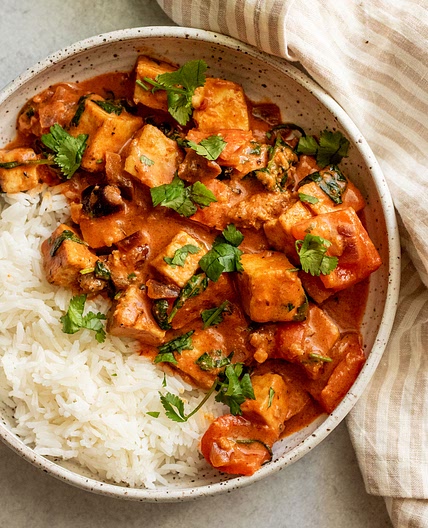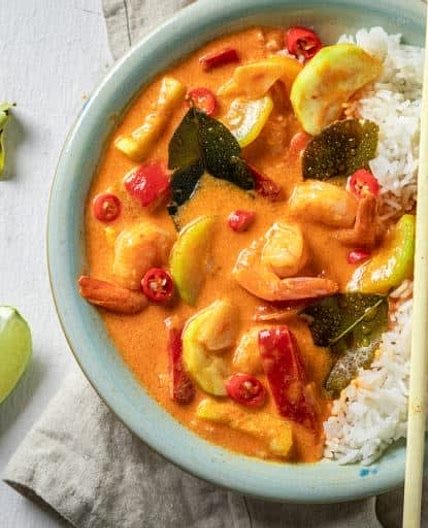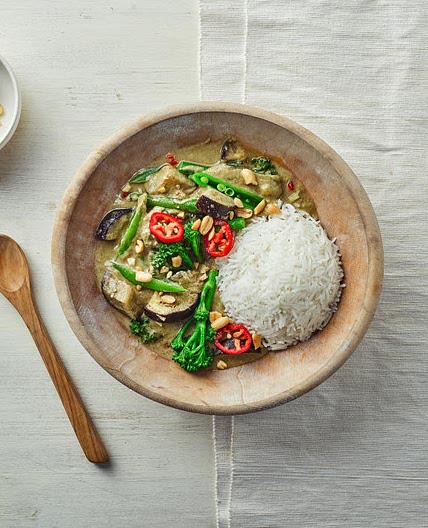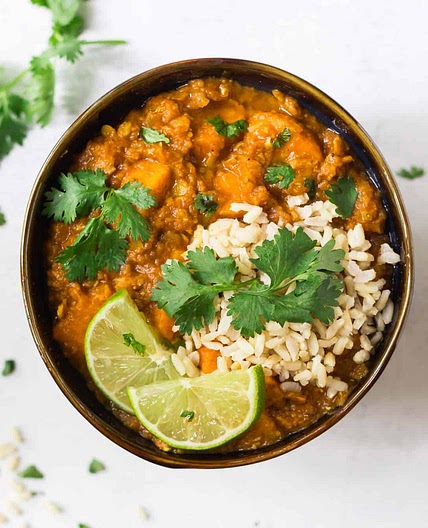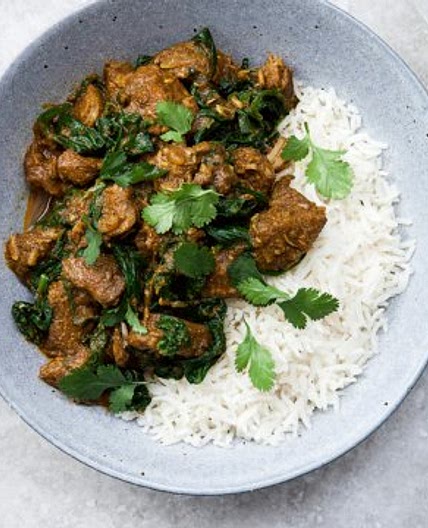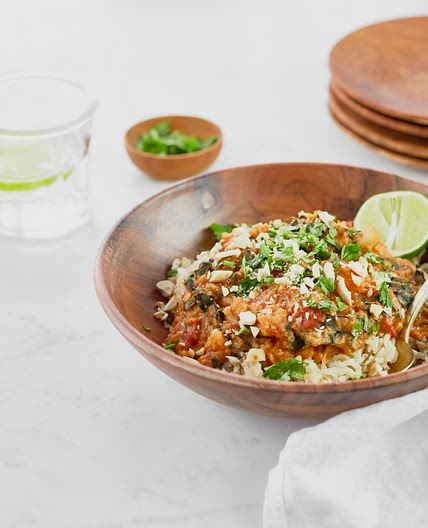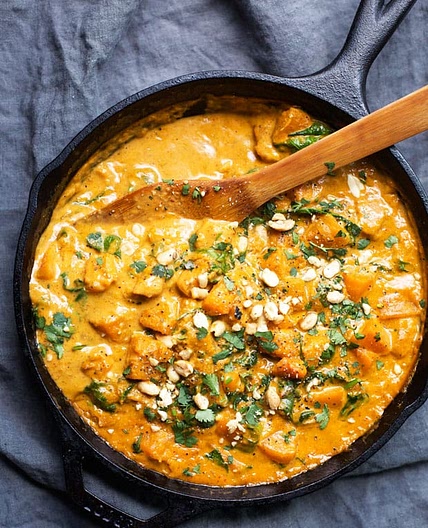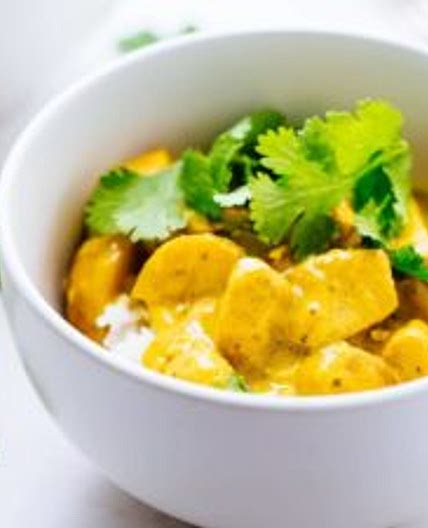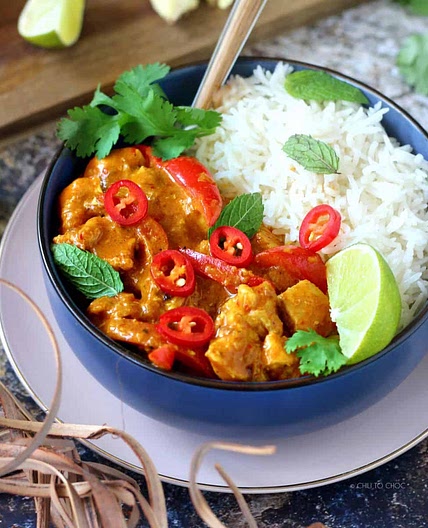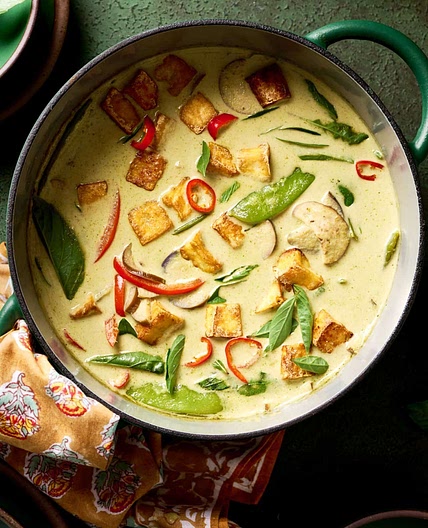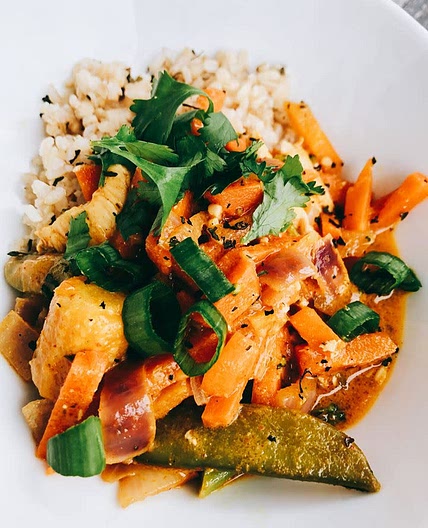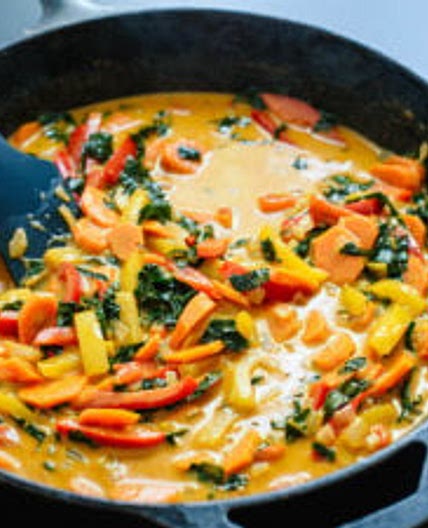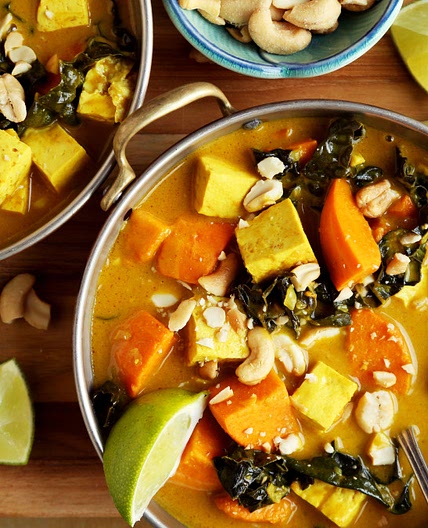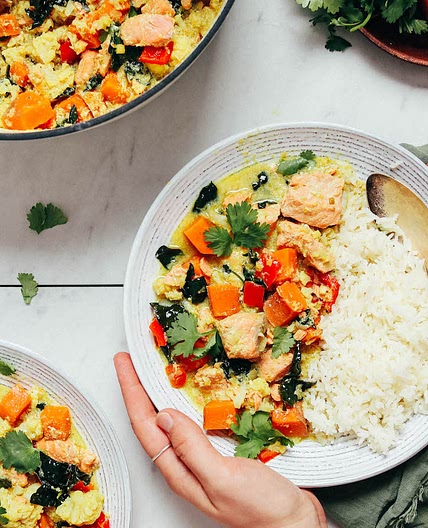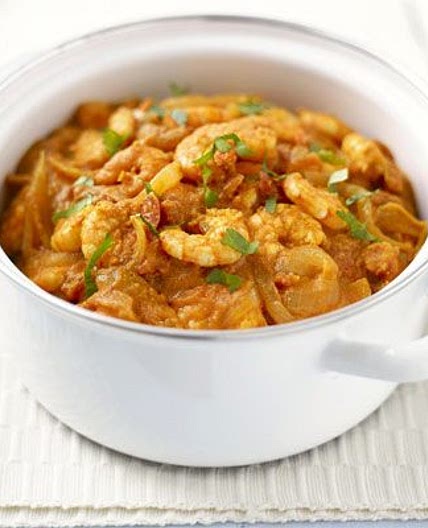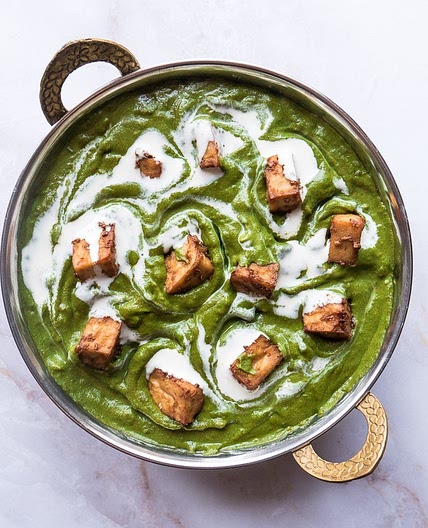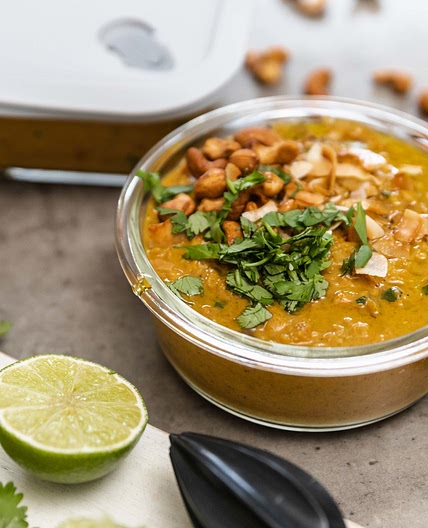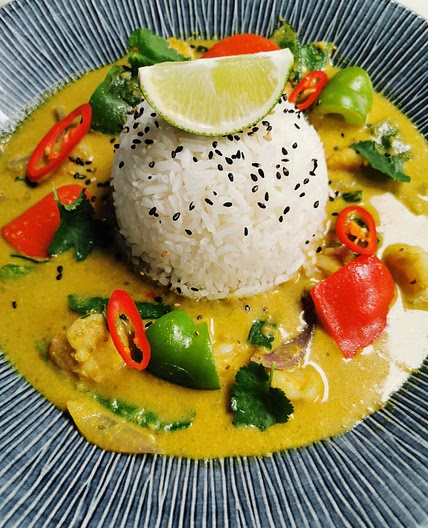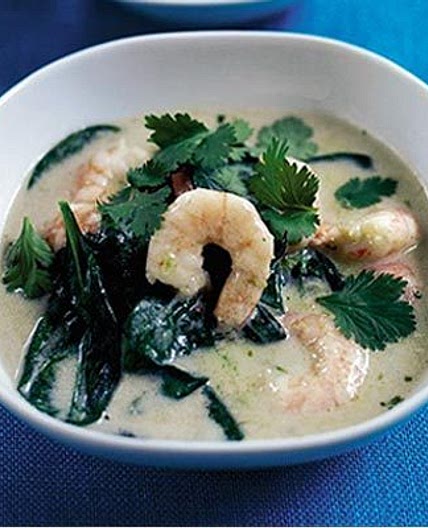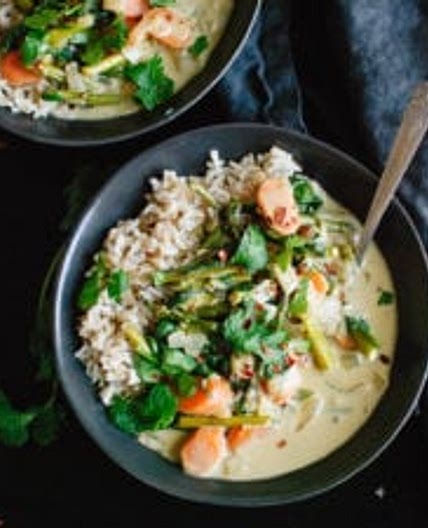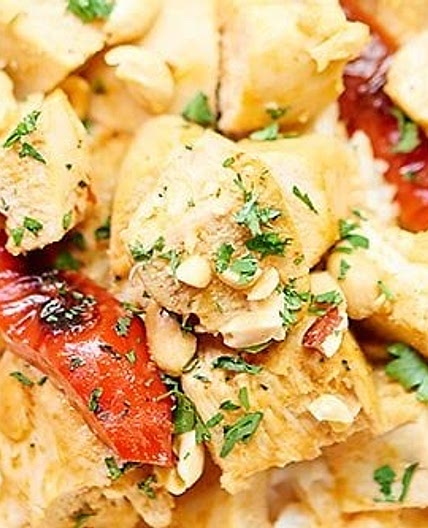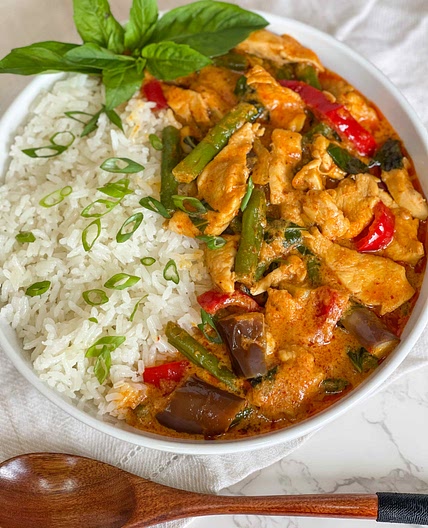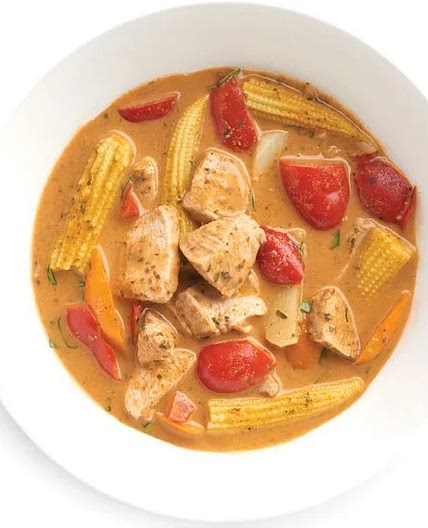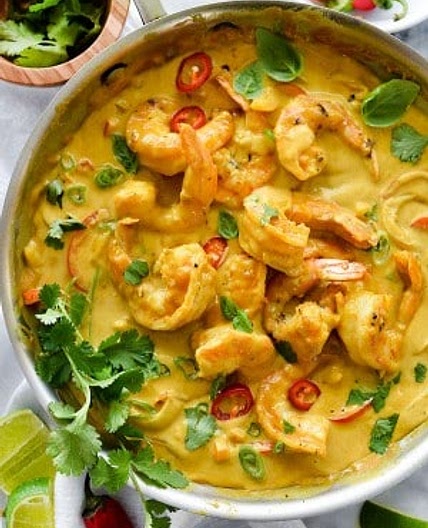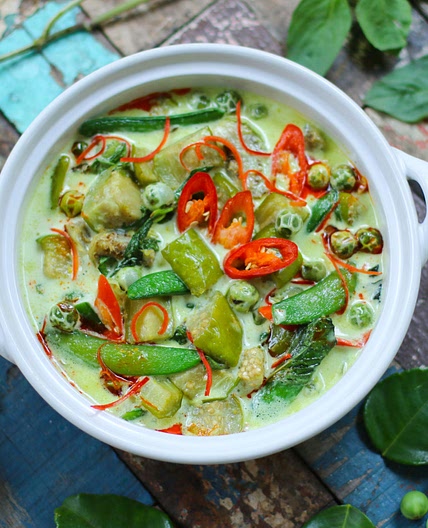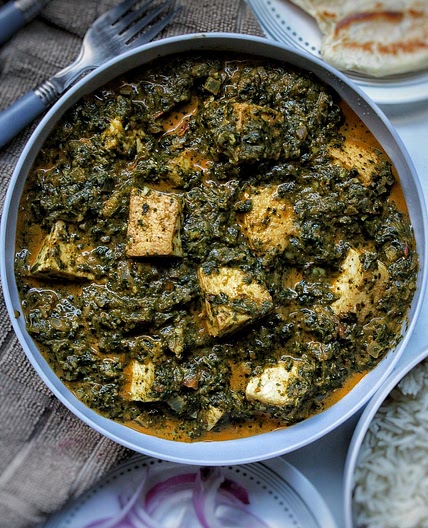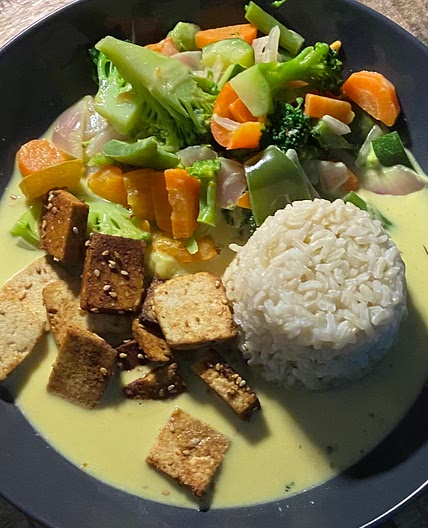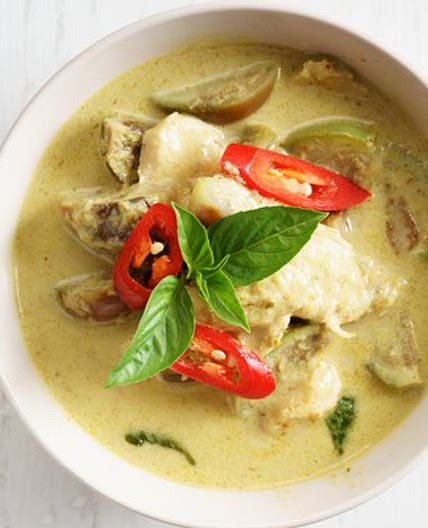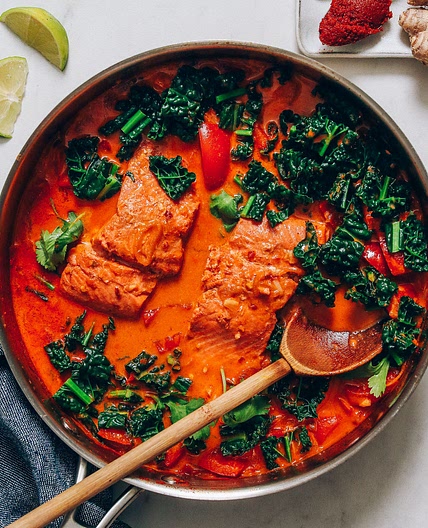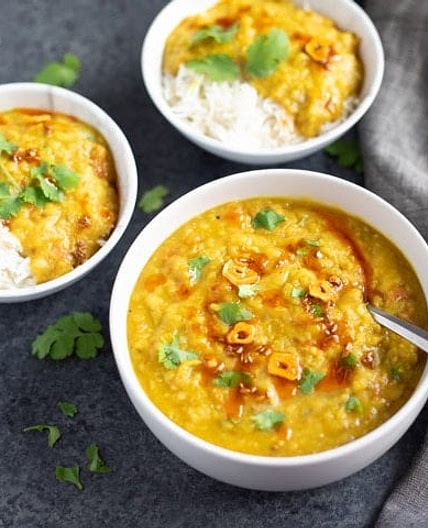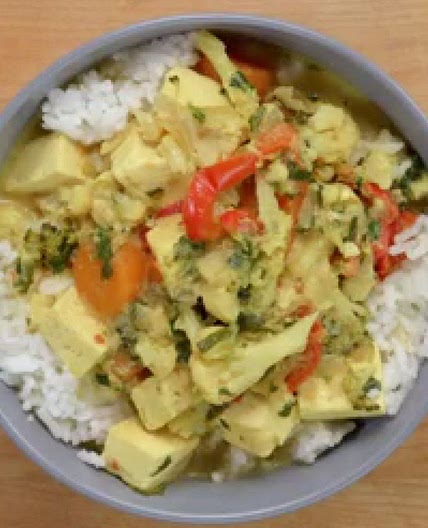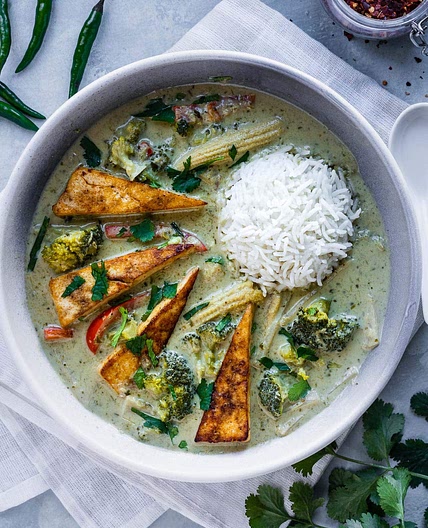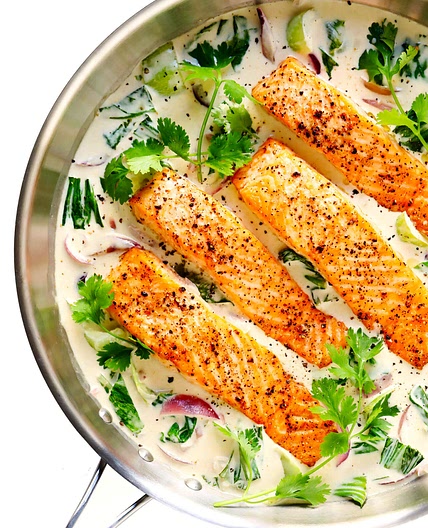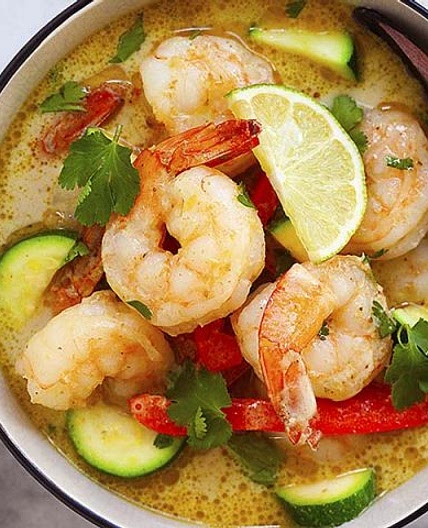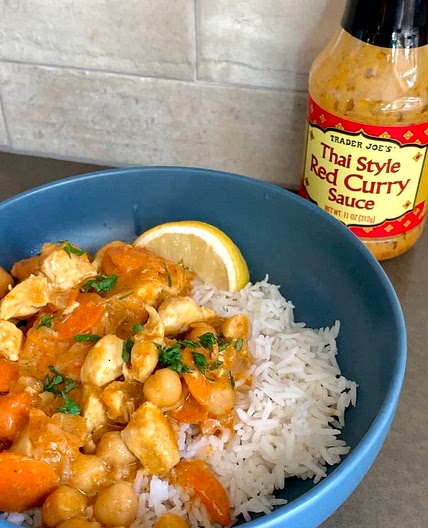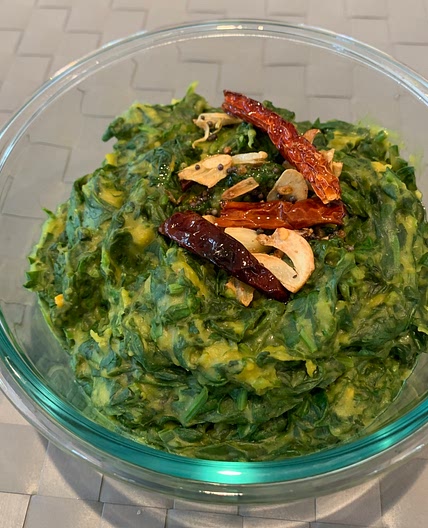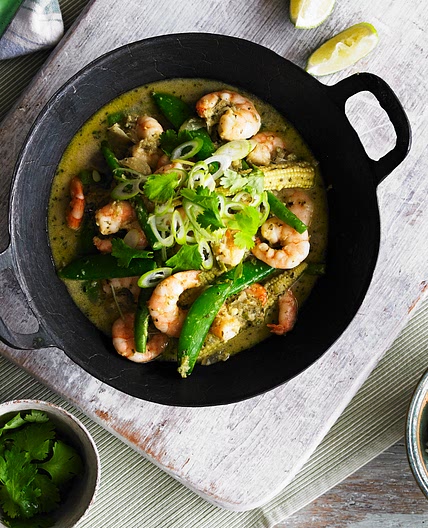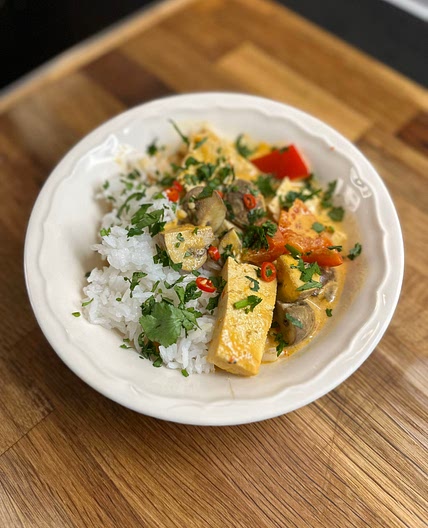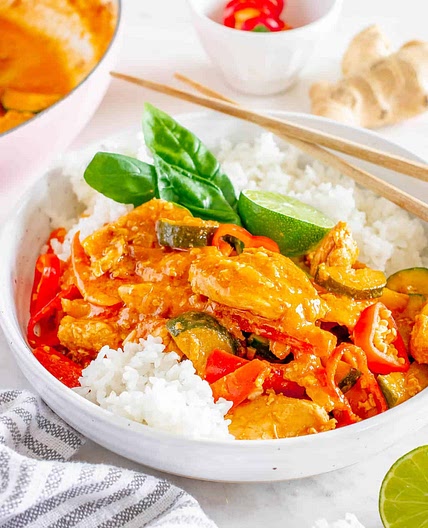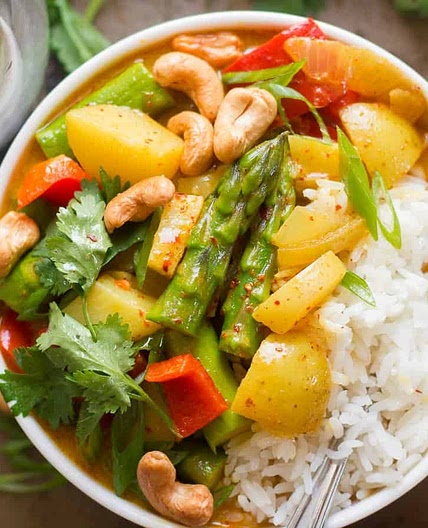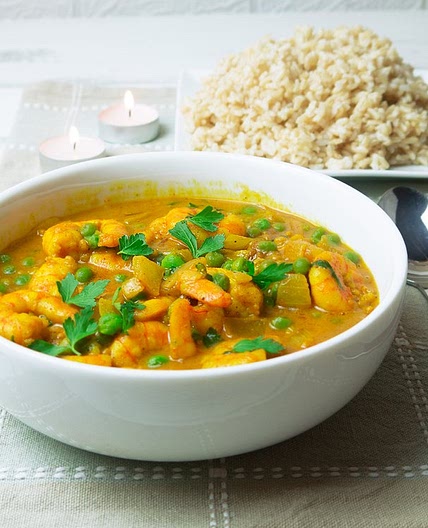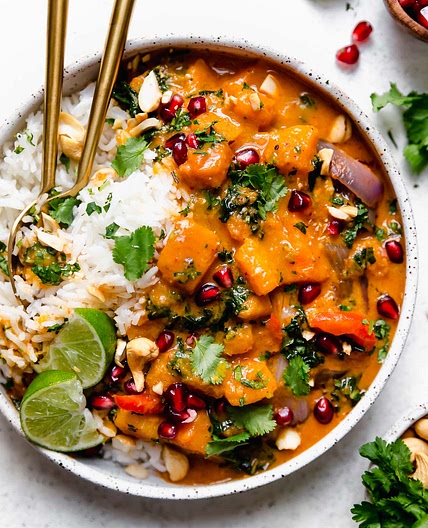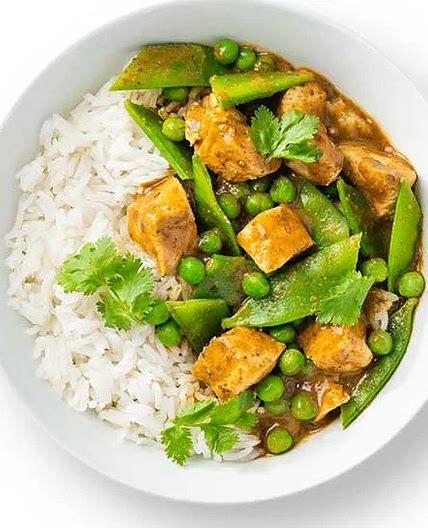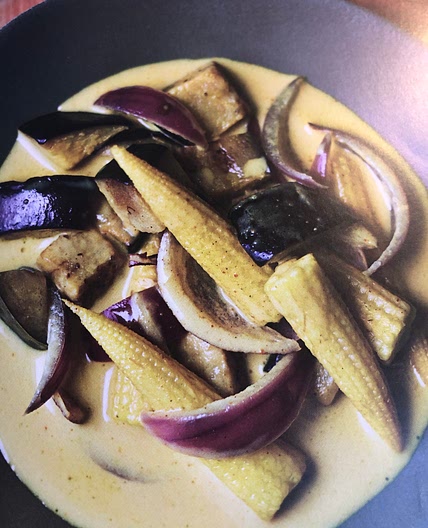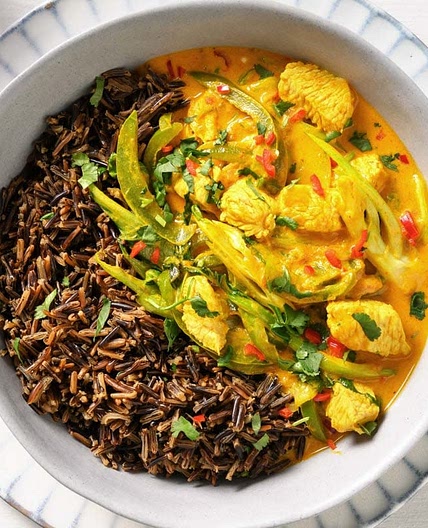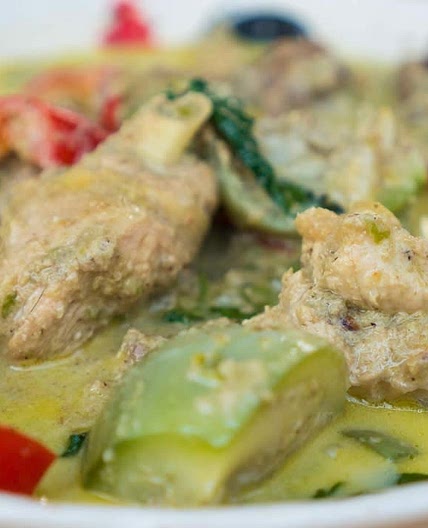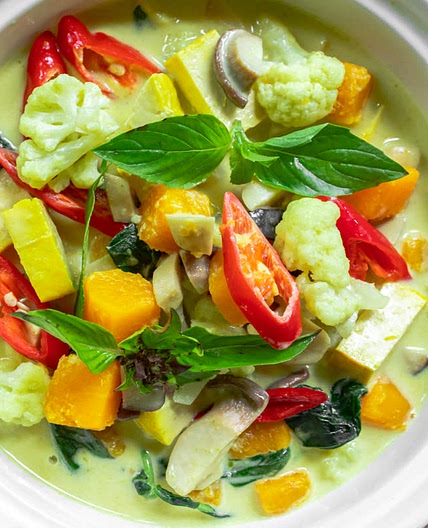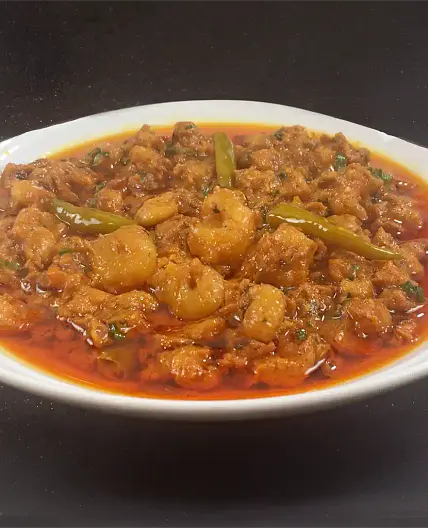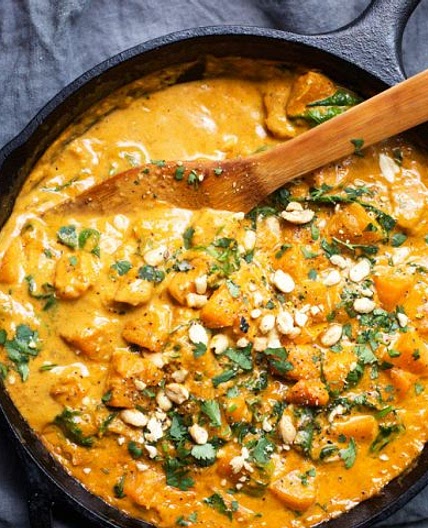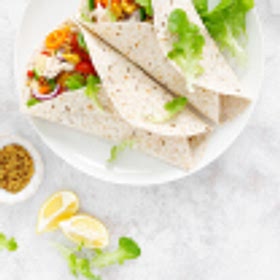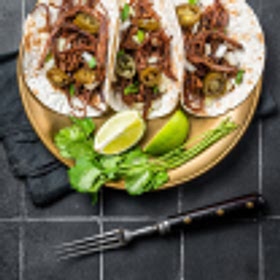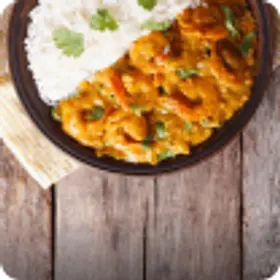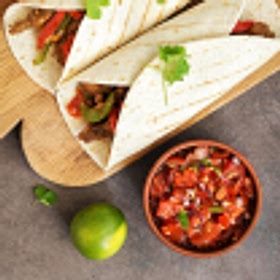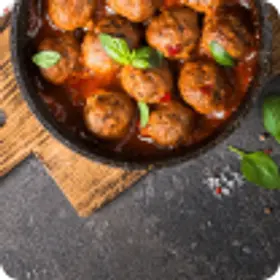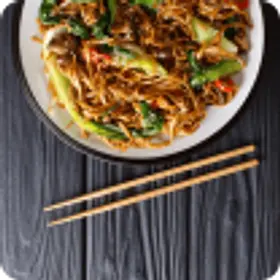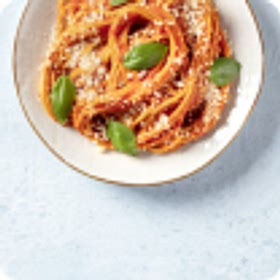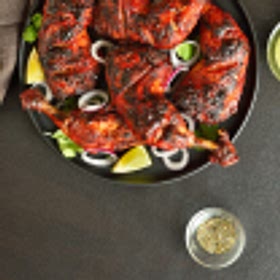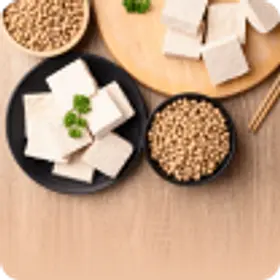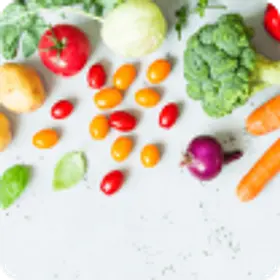Thai Curry: Recipes, Differences, Side Dishes Without Rice – Samsung Food
Thai curry is an aromatic and flavorful dish that has taken the world by storm. This delicious meal is a staple in Thai cuisine and has been popular across the globe, becoming a go-to dish for lovers of intense and complex flavors. Thai curry is a type of curry that is typically made using a paste of herbs and spices, coated in oil and heated in a wok or pot. The paste is then combined with coconut milk, vegetables, and meat or seafood, creating a rich and creamy sauce that does perfectly with rice or noodles. Let's take a closer look at the flavors and ingredients that make Thai curry so irresistible, and explore some tips and tricks for cooking this dish to perfection.
Thai curry is a dish that originated in Thailand, as the name suggests! The major characteristic of a Thai curry is the coconutty, creamy sauce. The sauce is created by combining a paste of herbs and spices with coconut milk, and occasionally broth and other seasonings like fish sauce or lime juice too.
The sauce comes with vegetables, and usually also includes tofu, meat, or seafood. There are several varieties of Thai curry, each with its own unique flavor and spice level.
As you can imagine, the key is really in the Thai curry paste recipe. Getting it right pretty much guarantees the results will be good – but each paste differs slightly. The main components of Thai curry paste are typically shallots, lemongrass, galangal, coriander, cumin, and chili peppers. These ingredients are combined and pounded together in a mortar and pestle until they form a fragrant and aromatic paste. This paste is then used as the base for the curry sauce.
Common Varieties of Thai Curry
There are several different varieties of Thai curry, each with its own unique flavor profile and level of heat. Here are a few of the most common varieties:
1. Green curry: Fiery and fragrant green curry, or “Gaeng Keow Wan,” is one of the most popular and vibrant Thai curry variations. It is made with a paste of coriander, cumin, lemongrass, green chilies, garlic, and shallots, along with coconut milk, vegetables, and chicken or beef.
2. Red curry: Bold and robust red curry, or “Gaeng Phet,” is known for its deep red color and strong flavors. It is made with a paste of red chilies, garlic, shallots, lemongrass, and galangal, along with coconut milk, vegetables, and chicken or shrimp. It might sound like the spicier option, but it actually isn’t usually hotter than green curry.
3. Yellow curry: Mild and fragrant yellow curry, or “Gaeng Karee,” offers a milder flavor profile compared to its spicier counterparts. It’s made with a paste of turmeric, cumin, coriander, garlic, lemongrass, and shallots, along with coconut milk, potatoes, and chicken or tofu.

Tips for Cooking Thai Curry
1. Use fresh ingredients: Using fresh herbs and spices will ensure that your curry has a bright and vibrant flavor. Fresh ingredients also add depth and complexity to the dish.
2. Cook the curry paste: Cooking the curry paste in oil for a few minutes before adding the coconut milk will help to release the flavors and aromas of the herbs and spices and give your curry a more intense and flavorful taste. If you don’t make your own, opt for a good quality paste from Thailand.
3. Use coconut milk: Coconut milk is a key ingredient in Thai curry, adding richness and creaminess to the sauce. Be sure to use a good quality canned coconut milk for the best flavor.
4. Don’t overcook the vegetables: Overcooked vegetables aren’t great! In curry, they become mushy and lose their vibrant color. Be sure to cook your vegetables until they are tender but still firm.
5. Adjust the spice level: Thai curry can be quite spicy, so be sure to taste your curry as you go and adjust the spice level to your liking. There are various types of Thai chilies with different heat levels so you can choose one which fits your taste.
Side Dishes for Thai Curry
When it comes to side dishes for Thai curry, rice is the obvious partner, and for good reason. It’s a fairly blank canvas which pairs well with the intense flavors of Thai curry.
- Jasmine Rice: Thai curries are commonly served with steamed jasmine rice. The fluffy texture and subtle fragrance of jasmine rice make it a perfect accompaniment to the spicy and flavorful curry.
- Sticky Rice: Another traditional option is sticky rice, also known as glutinous rice. It has a slightly sweet flavor and a sticky, chewy texture that pairs well with Thai curries.
- Coconut Rice: If you want to enhance the coconut flavor in the curry, coconut rice is an excellent choice. Cook jasmine rice with coconut milk instead of water for a subtly sweet and fragrant side dish.
Side Dishes Which Aren’t Rice
Curry doesn’t have to mean rice! Thai food offers some incredible side dishes which pair really well with the intense, fiery flavors of Thai curry:
- Papaya Salad (Som Tam): Som Tam is a refreshing and spicy Thai green papaya salad. Its vibrant flavors, including lime juice, fish sauce, chilies, and peanuts, provide a contrasting and zesty side dish to balance the richness of the curry.
- Cucumber Salad: A simple cucumber salad with a dressing made of rice vinegar, sugar, and a hint of chili can provide a cooling effect alongside the spiciness of the curry.
- Thai Spring Rolls: These crispy rolls filled with vegetables, herbs, and sometimes shrimp or chicken can be a delightful addition. They offer a contrast in texture and can be dipped in a sweet chili sauce or peanut sauce.
- Thai Vegetable Stir-Fry: A medley of stir-fried vegetables such as broccoli, bell peppers, carrots, snap peas, and baby corn can provide a colorful and nutritious accompaniment to the curry.
- Thai Noodle Salad: A cold noodle salad with thin rice noodles, fresh herbs, vegetables, and a tangy dressing can add a refreshing element to your meal. It can be made with flavors like lime, fish sauce, soy sauce, and chili.
FAQs
Yes, you can adjust the spiciness according to your preference. To make it milder, you can reduce the amount of chili peppers or curry paste. Alternatively, if you prefer it spicier, you can add more bird’s eye chilies or a dash of chili powder.
Yes! Thai curry can be made vegetarian or vegan by using vegetables, tofu, or plant-based protein substitutes instead of meat or seafood. Just ensure that the curry paste and other ingredients used are suitable for vegetarian or vegan diets. Look out for fish sauce in particular!
Popular additions to Thai curry include vegetables like bell peppers, bamboo shoots, eggplant, and green beans. Additionally, Thai curry can be garnished with fresh herbs like Thai basil or cilantro and served with steamed rice or noodles.
Curry Up and Get Cooking!
Thai curry is a flavorful and aromatic dish that has gained popularity all over the world. By using fresh ingredients, cooking the paste before adding coconut milk, and adjusting the spice level, you can create a delicious and authentic version that will be sure to please your taste buds.
Whether you prefer a spicy green curry or a milder yellow curry, there are endless variations to try and experiment with. So why not channel your inner chef and create your own Thai curry masterpiece today?

